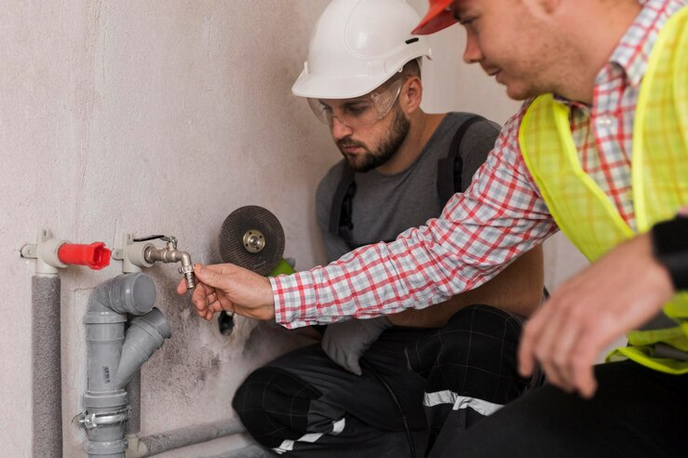Introduction
Drainage systems play a crucial role in maintaining the functionality of various infrastructures, including residential, commercial, and municipal buildings. However, these systems are often overlooked until a problem arises, leading to costly repairs and potential hazards. Drainage inspection is an essential process that involves thorough examination and evaluation of drainage systems to identify issues, prevent damage, and ensure efficient functionality. In this comprehensive exploration, we delve into the behind-the-scenes of drainage inspection, unraveling its significance, processes involved, challenges encountered, and the importance of regular maintenance.
Significance of Drainage Inspection
Effective drainage systems are vital for managing stormwater runoff, preventing flooding, and preserving the integrity of structures. Drainage inspection serves as a proactive measure to detect potential problems before they escalate into major issues. By identifying blockages, leaks, or structural damage early on, drainage inspection helps prevent water damage, mold growth, and soil erosion. Moreover, regular inspection and maintenance can extend the lifespan of drainage systems, saving property owners significant costs in repairs and replacements.
Process of Drainage Inspection
- Pre-Inspection Preparation:
- Assessment of Inspection Scope: Determine the extent of the drainage system to be inspected, including pipes, drains, culverts, and catch basins.
- Equipment Preparation: Gather necessary tools and equipment, such as cameras, probes, and measuring devices, for conducting the inspection.
- Safety Precautions: Ensure compliance with safety protocols, including wearing protective gear and securing work areas to prevent accidents.
- Visual Inspection:
- Surface Examination: Inspect visible components of the drainage system for signs of damage, such as cracks, corrosion, or sediment buildup.
- Drainage Outlets: Check drainage outlets, including grates and covers, for blockages caused by debris or vegetation.
- Camera Inspection:
- Utilization of CCTV Cameras: Insert high-definition cameras into drainage pipes to capture real-time footage of interior conditions.
- Inspection of Pipe Integrity: Assess the structural integrity of pipes, identifying cracks, breaks, root intrusion, or sediment accumulation.
- Documentation: Record and document findings using digital imaging technology for comprehensive analysis and reporting.
- Water Flow Testing:
- Flow Rate Measurement: Conduct flow rate tests to evaluate the efficiency of drainage systems in managing water runoff.
- Identification of Obstructions: Determine the presence of obstructions hindering water flow, such as clogs or collapsed pipes.
- Evaluation and Reporting:
- Data Analysis: Analyze inspection data to assess the overall condition of the drainage system and identify areas requiring immediate attention.
- Reporting: Generate detailed inspection reports outlining findings, recommendations, and proposed solutions for addressing identified issues.
- Client Consultation: Review inspection results with clients or stakeholders, providing insights into maintenance requirements and potential repair options.
Challenges in Drainage Inspection
- Accessibility Issues:
- Limited Access Points: Some drainage systems may have limited access points, making it challenging to inspect certain areas, such as underground pipes or culverts.
- Restricted Spaces: Confined spaces within drainage networks pose risks to inspectors, requiring specialized training and equipment for safe entry.
- Environmental Factors:
- Weather Conditions: Adverse weather conditions, such as heavy rain or snow, can affect the accuracy and safety of drainage inspections, necessitating adjustments to scheduling and procedures.
- Ecological Impact: Inspections conducted near natural habitats or water bodies must consider potential environmental impacts and adhere to regulatory guidelines to minimize disruption to ecosystems.
- Technological Limitations:
- Equipment Malfunctions: Technical issues or malfunctions with inspection tools, such as cameras or sensors, can impede the efficiency of drainage inspections, requiring troubleshooting and maintenance.
- Data Interpretation: Interpreting complex data obtained from inspections requires expertise and analytical skills to accurately assess the condition of drainage systems and recommend appropriate actions.
Importance of Regular Maintenance
Regular maintenance is essential for preserving the functionality and longevity of drainage systems. By implementing a proactive maintenance schedule, property owners can mitigate the risk of costly repairs and prevent potential hazards associated with drainage issues. Key aspects of regular maintenance include:
- Routine Inspections: Conducting periodic inspections allows for early detection of problems and prompt intervention to prevent further damage.
- Clearing Debris: Regularly clearing debris, such as leaves, twigs, and sediment, from drainage outlets and pipes helps maintain optimal flow and prevents blockages.
- Repair and Replacement: Addressing minor issues promptly through repairs or replacement of damaged components can prevent extensive damage and costly repairs in the future.
- Vegetation Management: Managing vegetation growth near drainage systems minimizes the risk of root intrusion and blockages, ensuring uninterrupted water flow.
Conclusion
Drainage inspection is a critical process that safeguards infrastructure, prevents water damage, and ensures environmental sustainability. By employing a systematic approach encompassing visual inspections, camera surveys, flow testing, and comprehensive reporting, drainage inspectors can identify issues proactively and recommend appropriate solutions. Despite facing challenges such as accessibility issues, environmental factors, and technological limitations, the importance of regular maintenance cannot be overstated. Through routine inspections, maintenance, and timely repairs, property owners can optimize the performance of drainage systems and mitigate risks associated with drainage issues. Ultimately, investing in drainage inspection and maintenance is a proactive strategy that yields long-term benefits in terms of cost savings, property protection, and environmental stewardship.





Comments